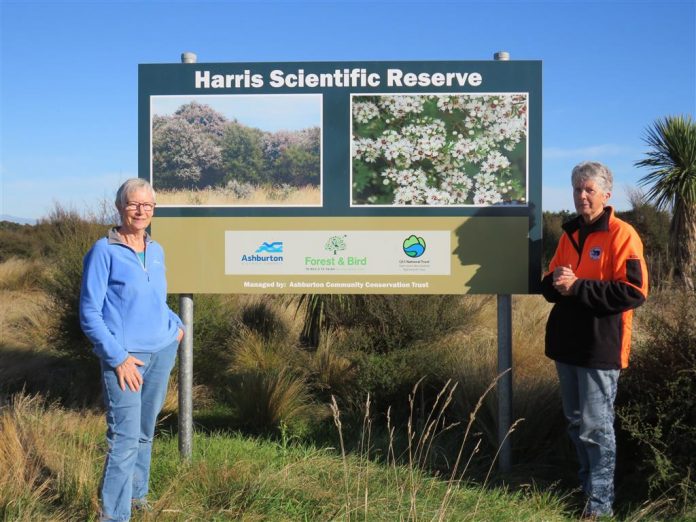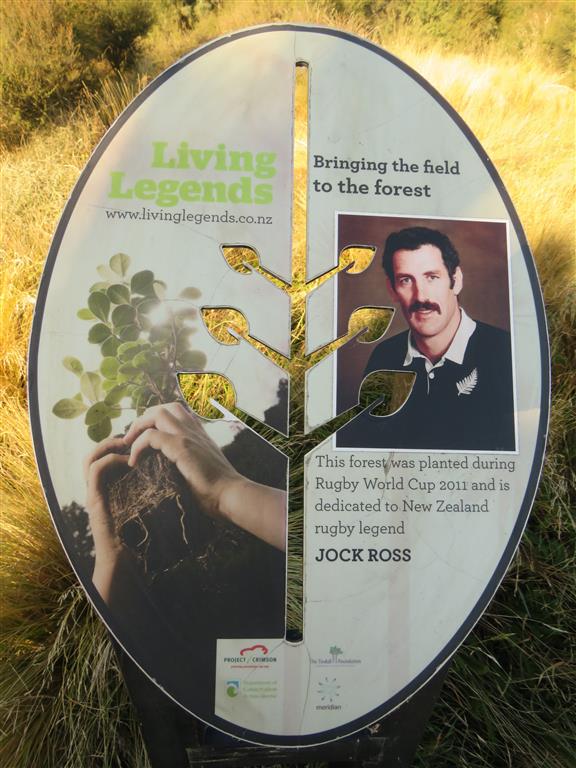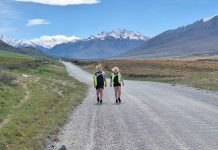
Driving past Harris Scientific Reserve on Lovett’s Road, Maronan one could be forgiven for thinking its just a piece of land with a few bushes, grasses and not much else.
The purpose of the 11 and half hectare reserve is to restore the plant life that once covered The Plains.
Shirley and the late-Arthur Harris use to farm this land. The land that is now the reserve isn’t lush pastoral land but more river bed type of ground.
In 1988, Dr Brian Molloy negotiated with the Harris family to create a Queen Elizabeth II Trust covenant over the 2.4 hectares they were using for shelter that contained the best of the kanuka (native plant).
The Harris’ later sold their farm and the Ashburton District Council purchased it but not to turn it into a conservation area.
The covenant became the reason for the creation and development of this reserve, coordinated by the Ashburton Branch of Forest and Bird.
The Ashburton Community Conservation Trust (ACCT) was established to be the reserve guardians. The vision of the trust was to protect the remaining kanuka, restore the Canterbury drylands ecosystem that existed prior to settlement of the plains and to use only plants sourced on the plains.

The establishment of the reserve is of vital importance to the ecosystem that was once part of the Canterbury Plains remains. It it also provides endemic Canterbury plants and animals a protected habit.
ACCT member Val Clemens said ‘‘present and future generations are able to visit and be informed about what the area use to look like.’’
Edith Smith, ACCT member, said ‘‘The reserve planting started in 2008 with 1000 plants from the Department of Conservation Nursery at Motukarara. The first planting attracted 250 people to attend.’’
She said today ‘‘many of the plants self seed, others are sourced locally including from along fence lines or bought from the plant nursery at Temuka’s Arowhenua Marae.’’
Val said ‘‘the nursery collects seeds from the reserve to use in their propagation programme. All the native plants at the reserve are grown from plants and seeds grown between the Rangitata and Rakaia Rivers and Southern Alps and Pacific Ocean.’’
‘‘A comprehensive survey of native plants in Mid Canterbury was undertaken in 1996. Another study was undertaken in 2013 and 58 per cent of the native plants identified in the 1996 survey had gone,’’ Edith said.
Education is the key to ensuring the survival of the native plants in their natural environment.
The work of the trust is supported by community groups, schools, businesses and individuals. From 2011-13, the Rugby World Cup Living Legends Project, with local legend, former All Black Jock Ross supported the planting of 6000 plants at the reserve and he continues with his family to provide support.
Edith said ‘‘the diversifying of farming practices has significant impact on the native plants,’’ that once covered the plains but slowly this patch of land is reverting back to its former glory.
Humans have impacted the native flora and fauna of the plains. Sprays are used to control weeds but the right ones are used to protect the natives plants.
Val said today ‘‘99 percent of the natural vegetation on the Canterbury plains has disappeared.’’
This year is the centennial of the Royal Forest and Bird Protection Society of New Zealand. The theme is “What is your legacy?” Many New Zealanders love nature – it’s part of who we are. During 2023, Forest and Bird hope to encourage thousands of small actions to help protect and restore our environment.
In celebration of the coronation of King Charles and to mark the 100th anniversary of Forest and Bird, ACCT have partnered with Volunteering Mid & South Canterbury, Ashburton District Council and Hakatere Marae to hold community planting days for volunteers on May 6 and 7 at the reserve, and Hakatere Marae.
They also hold planting days at the reserve during the year and volunteers are always welcome.



